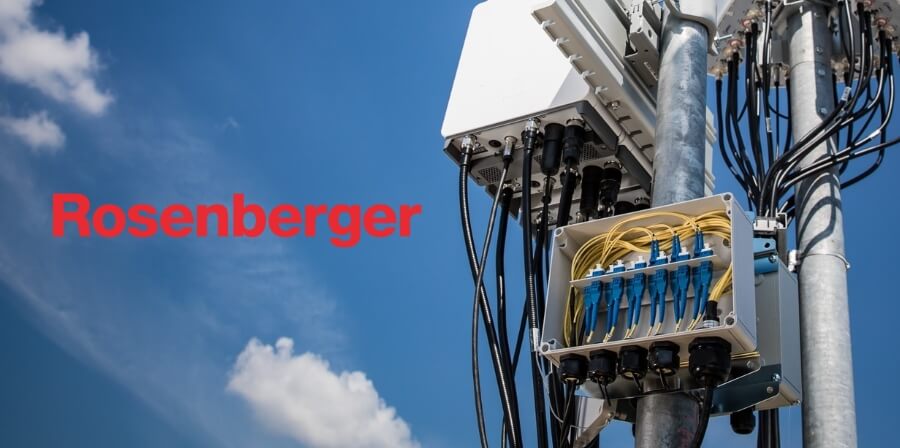To date, over 260 global operators have launched 5G commercial services, serving over 1.5 billion users. The ongoing development and innovation in network deployment and applications signify a dynamic landscape. As a pivotal link between 5G and the anticipated 6G, the focus on the latter part lies within the realm of 5.5G, also known as 5G-Advanced. Key attributes of 5.5G network construction include: exceptional performance, eco-friendly practices, compatibility, resource sharing, and self-intelligent management, meeting evolving demands of OEMs and operators.
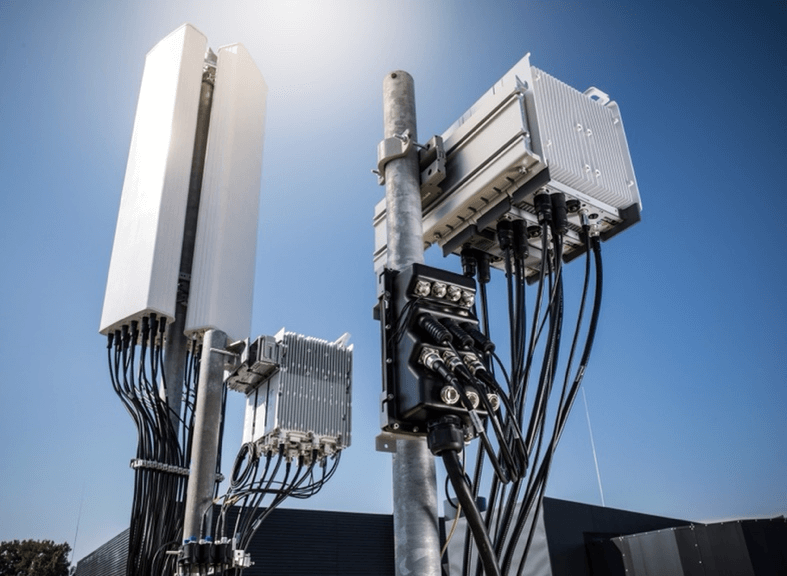
Rosenberger's NPOI® (Neutral Point of Interface) connectivity solutions provide a range of scalable, flexible, and high-performance FTTA/PTTA solutions designed to be future proof. Employing a shared and generalized design concept, these solutions utilize preconnected trunk technology, non-proprietary plug-and-play tower fiber and power connection ports. This approach facilitates co-construction of sites among different operators or OEMs, encourages RAN sharing, minimizes connection loss, enhances network transmission performance, and optimizes resource utilization. The aim is to maximize the return on investment for site constructions in the upcoming 5.5G era.
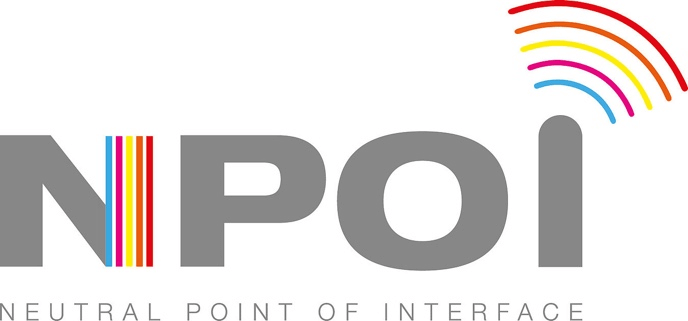
NPOI® connection solutions include both a preconnected FTTA/PTTA trunk cabling solution and a hybrid FTTA/PTTA cabling solution.
Preconnected FTTA/PTTA Trunk Cabling Solution
The preconnected FTTA/PTTA trunk cabling solution is a comprehensive connection system that includes fiber trunk, power trunk, fiber jumper, power jumper, distribution panel, and distribution box/canister. Notably, the fiber trunk and power trunk are separated entities within this solution, available in boxed and canister configurations. The selection of cable cores and sizes for the fiber trunk or power trunk aligns with the network transmission channel capacities. These trunks are pre-terminated in the plant, ensuring optimal performance and reliability in terminations. Serving as the collection point for the backbone, the distribution box or canister can establish connections with various OEM equipment through branch jumpers, enabling connections for both public and private channels.
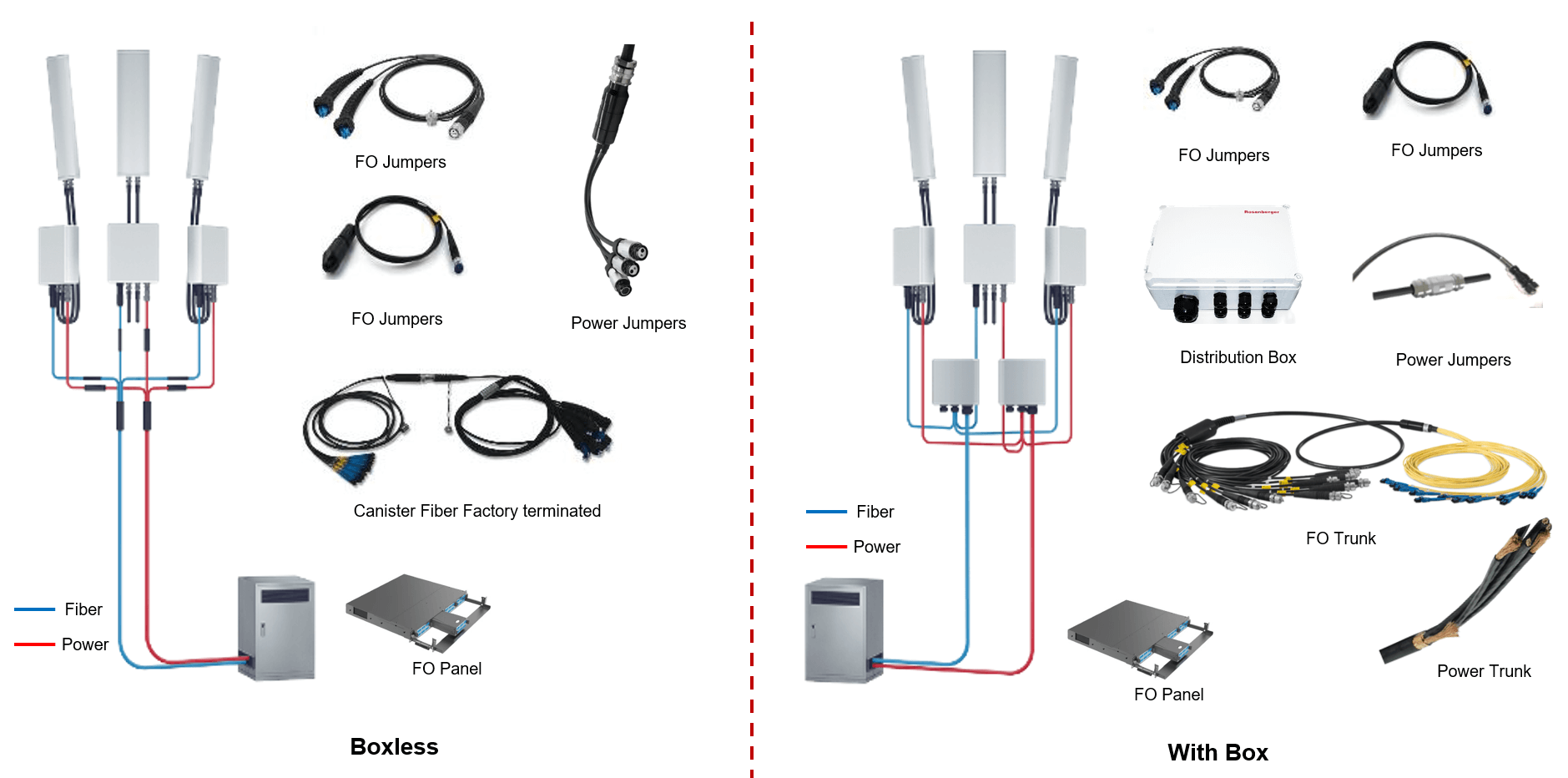
In contrast to the traditional single discrete cable connection, the pre-connected trunk solution enables the co-construction and sharing of transmission channels among different operators or OEMs through a single cabling process. This streamlined approach reduces the quantity of sites and associated costs. Additionally, the solution provides redundant backup for transmission links, facilitating convenient network upgrades and future expansion.
Key features of the preconnected trunk solution include:
- IP66 protection design
- Fiber capacity up to 96 cores, with both single-mode (SM) and multimode (MM) options
- Power capacity up to 18 cores, with various AWG and mm² specifications (6, 8, 10, 12 AWG or 4, 6, 10, 16 mm²)
- Compatibility with MPO/MTP/LC or customized connectors
- Factory-terminated connectors ensuring excellent performance and reliability.
Hybrid FTTA/PTTA Cabling Solution
The Hybrid FTTA/PTTA trunk cabling solution is a comprehensive connection system consisting of a hybrid trunk, hybrid jumper or fiber/power jumper, distribution panel, and distribution box. The hybrid trunk is tailored to the specific requirements of the number of radios and transmission distance, offering a range of cable configurations and sizes. The distribution box features an IP66 waterproof design and provides two aggregation approaches: traditional in-box connection and plug-and-play out-of-box connection. Customers have the flexibility to choose between separated fiber jumpers and power jumpers for connecting to radio device ports, or they can opt for hybrid jumpers based on their preferences.
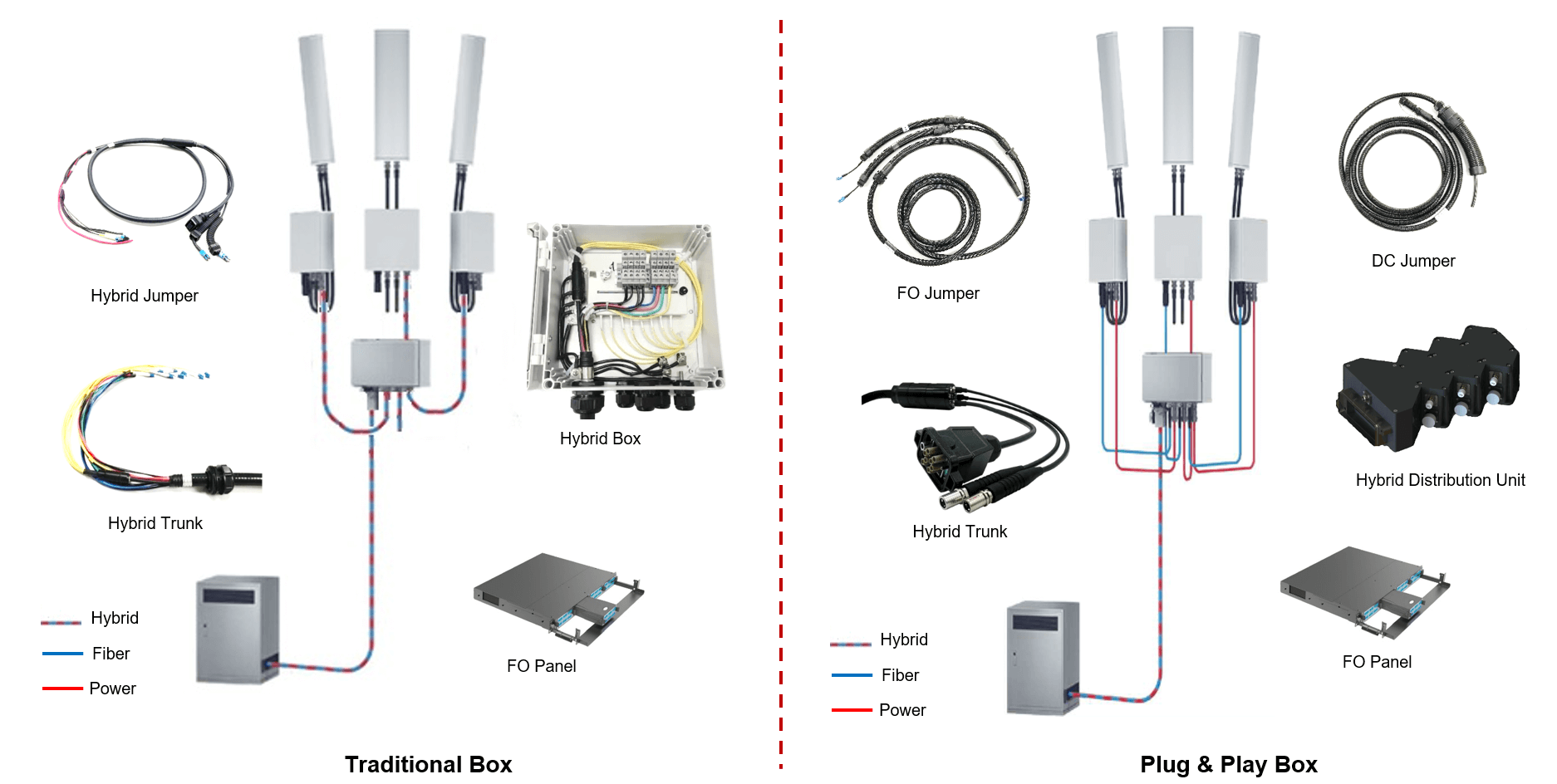
Similar to the preconnected FTTA/PTTA cabling solution, the hybrid FTTA/PTTA cabling solution offers the capability to facilitate site co-construction and RAN sharing through a single cabling process. Its overall cost-effectiveness becomes particularly advantageous in areas with high labor costs. While the raw materials cost for the hybrid solution may be higher, its installation and maintenance are expedited and convenient. Notably, the hybrid cabling solution may reduce the number of RRU device ports and increase RRU installation density, facilitating the deployment of 5.5G networks.
Key features of the hybrid FTTA/PTTA trunk cabling solution include:
- IP66 protection design
- Availability for 3~9 RRU configurations
- Fiber capacity up to 36 cores, supporting both single-mode (SM) and multimode (MM)
- Power capacity up to 18 cores, with various AWG and mm² specifications (6, 8, 10, 12 AWG or 4, 6, 10, 16 mm²)
- Compatibility with MPO/MTP/LC or customized connectors
- Customizable hybrid cables and connectors
- Factory-terminated connectors ensuring excellent performance and reliability.
As the new wave of 5.5G emerges, the optimization and upgrade of site construction are vital for achieving the best network performance. The selection of connectivity products and solutions between BBU/PSU, RRH, and antenna plays a crucial role. Rosenberger's NPOI® FTTA/PTTA Connectivity Solutions, based on a standardized backbone link platform and flexible branch channels, ensures trouble-free operation in harsh environments for network transmission channels of different operators and OEMs. This approach aligns with green, low-carbon, compatible, sustainability goals and enables continued growth in the evolving telecommunications landscape.
